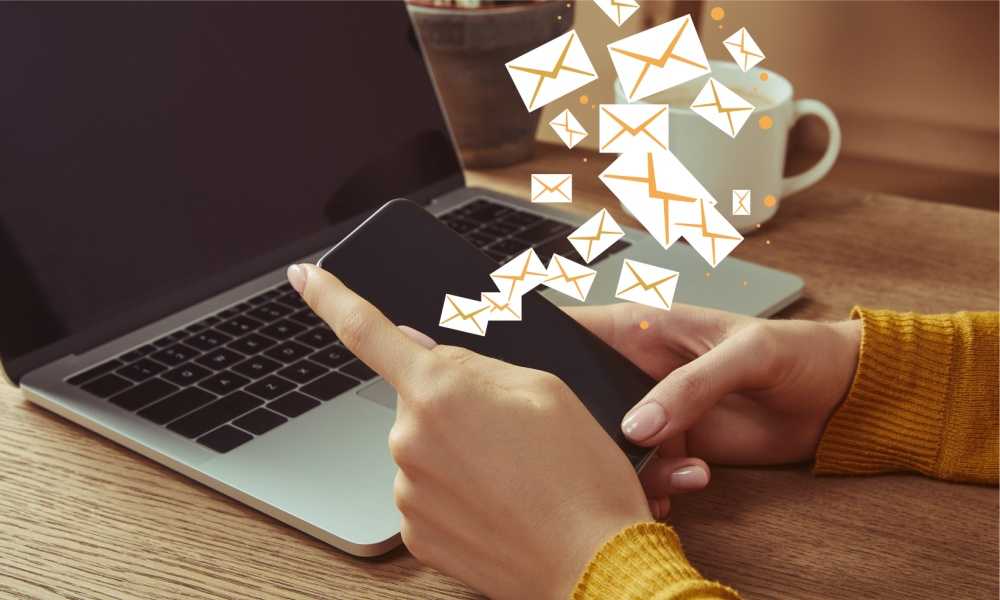Sales Email Template – From Cold Contacts to Warm Customers

For some marketers, crafting a sales email template that converts is more art than science. Still, certain general rules apply.
Email marketing puts content quality in the foreground. The template should be fun, engaging, and to the point. And here comes the art part of a sales email, you need to factor in other aspects like customer behavior.
We’ve selected a few tried-and-tested methods to ensure you get the most from your template. There are also suggestions on how to customize the email template according to customer type or behavior.
Crafting an Enticing Sales Email Template
Each sales email that converts has 5 key features that you should focus on. They include email subject, opening, body, closing, and signature. Here’s how to nail them:
Subject
If your subject line sounds like a used car salesman, it’s likely the email will remain unopened. Or worse, end up in the spam folder.
On the other hand, there are a few good ways to grab recipients’ interest. Use the “Customer’s Name + quick question for you” format to immediately grab their attention. Subject lines that start with ideas for/thoughts about/questions about are engaging as well.

However, you need to avoid spammy lines that include words like a reminder, help, don’t, exciting, specials, and so on.
Expert Trick: Divide your prospects into two lists of about 100 contacts. Send out the same email except with a different subject for each list and check for its performance. This is called A/B testing and you should aim for between 30 to 50% open rate. It gives you a good idea of the subject line that resonates with your customers.
Opening
The sales email template is about the customer, not you or your company. So don’t start with “Hi my name is” or “We are company X.”
Good opening lines may begin with “Congratulations on,” “I’ve noticed you,” “Loved your post on,” etc. These lines are more personal and create a conversational atmosphere with your contact.
Body
Subscribers often get annoyed by default propositions like “sign up with us and we’ll do this and that,” or “get our amazing product at a one-time offer.”
You should focus on questions that are of importance to your customers, rather than make empty value propositions. Feel free to ask the recipients about their priorities and briefly explain how your service or product can help.
Try to put yourself in the customers' shoes and think whether the message resonates with you. An image or two that go with the text are also welcome. But don’t make it a blatant promotional with just a picture of your product. Do some visual story-telling with images that involve people using the product.
Closing
At the end of your sales email, the customers need to have a clear call to action. They should also be able to provide a simple yes or no answer to your call. This minimizes friction and increases the chances of getting a response.
Signature
Some small businesses might overlook the significance of a professional email signature. But it’s as important as any other element of a sales email template.
The signature should be short and simple to read. Contact information usually includes a phone number and a link to Twitter, LinkedIn, or other social media. Corny quotes are a big no-no and the same goes for pasting images into the signature.
Subtle colors that are in line with your branding are allowed but keep the font simple and legible.
Customer-Based Tweaks
Sales email templates may look and feel a little different, based on the type of customers they target. The following list includes some of the most common situations and useful tricks to take advantage of them.

Cold Emails
If your potential customer has never heard of your company, you need to give them a reason to engage. Use the email body to show that you understand the customers’ particular needs and clearly outline the mutual goals.
You can also stress the quick time it takes to read your email as an efficient hook to keep them on. Combine this with an enticing closing and you are bound to have a great click-through/response rate.
Triggered Emails
The golden rule of online marketing is to strike the iron while it’s hot.
The trigger event gives you a valid reason to reach out to your potential customers and present them with an offer or proposal. Use the opening line to briefly describe the trigger and immediately move on to examples of the benefits of your service/product.
You shouldn’t hesitate to use research, statistics, and other data that deliver gravity to your claims. It enhances the company’s credibility and creates a sense of urgency.
Free/Trial Version Emails
You’ve already attracted the customers to start using the freemium version of your product/service. And now’s the time to take the next step and secure a paid subscription.
Explain how the premium features allow them to get more for their specific needs. Plus, you might want to add a time-limited discount to prompt them to take action.
Conclusion
We’ve provided you with a few proven methods for creating sales email templates that generate more revenue. The tricks apply across the industries, from eCommerce to specialty online service providers.
There are many ready-made templates you can use as a blueprint for your email marketing effort. Just make sure to tweak them enough so they don’t sound too generic.
